- Home
- Alison Weir
Queen Isabella: Treachery, Adultery, and Murder in Medieval England Page 9
Queen Isabella: Treachery, Adultery, and Murder in Medieval England Read online
Page 9
Parliament met at Blackfriars in London on 8 August, and the King arrived in the capital a day or so later.174 On the sixteenth, Parliament formally presented the Ordinances to the King for his consent. A desperate Edward tried to bargain with them, offering to agree to all their provisions on condition that his “brother Piers” be allowed to remain with him. But the barons were implacable. Even though the King went on relentlessly “coaxing them with flattery” or “hurling threats,” “they could in no way be brought to agree.”175
So far, the records have afforded us only occasional glimpses of Isabella, but fortunately, her Household Book for the year 1311–12 has survived. This provides a great deal of information about her daily life at this time, which is why there are more detailed references to her in the period covered by the rest of this chapter.
Isabella had traveled south at a slower pace than Edward.176 She moved south via Morpeth (27 July), Durham (29 July), Darlington (30 July), Northallerton (1 August), Pontefract (5 August), Doncaster (6 August), Nottingham (9 August), Northampton (16 August), and Saint Albans (19 August) and joined the King in London around the twenty-first. Her possessions were transported on carts supplied by northern monks.177
During her journey, Isabella dictated letter after letter to a number of people, including the Bishop of Durham; the Abbot of Thornton; the Abbot of Newburgh; William Melton, Keeper of the King’s Wardrobe and of the Privy Seal; and one Brother William de Caverce of the Minorite Order.178 As will be seen, this correspondence was to continue after her return to London. All these letters are lost, but, looking at the number sent, we may speculate that some of them at least were written in an attempt to win support for the King.
Isabella brought in her train a Scottish orphan boy, “little Thomelinus,” and when she got to London, “moved by piety of heart by his miseries,” she charitably gave him alms in the form of “sustenance and clothing, in the amount of four ells of blanket cloth and one hanging, purchased for the bed of the said Thomelinus by the hands of John de Stebenhethe, merchant of London, at Westminster,” for 6s. 6d. (33p.). Once in London, Isabella sent the child to live with Agnes, the wife of Jean, one of her French musicians, “to learn his letters from her,” and provided 40s. (£2.00) for his keep for the next year. She also paid 12s. 8d. (63p.) “for small necessities, purchased for his use, along with getting rid of the sores on his head.”179 Another instance of her thoughtfulness occurred when, on 4 September, she sent one William Bale “to see the condition of John de Moigne, ill at St Albans”; both men were employed by her as messengers.180
On her arrival in London, Isabella, who had been brought up to regard kings as virtual autocrats, cannot have been pleased to learn that her husband’s royal prerogatives had been usurped by his barons, and she must have had very mixed feelings as she watched him agonizing over approving the Ordinance that demanded Piers’s banishment. Yet both he and she knew that he really had no choice. The alternative, with which he had already been threatened, was civil war, and he was in no position to win it. Isabella may well have confided her anxieties in a letter she wrote to Queen Marguerite, then at Devizes, on 4 September.181
The Ordinances were publicly proclaimed on 27 September in Saint Paul’s Churchyard in London,182 and Archbishop Winchelsey threatened to excommunicate anyone who dared to violate them.183 Three days later, Edward was finally forced to agree to them all, without exception. It may be significant that, on 5 October, Isabella wrote to John de Insula, a prominent judge, at York;184 was she seeking legal advice regarding her husband’s position?
The King was determined to see Piers one more time before their parting, and on 8 October, he issued a safe-conduct to “our chosen and faithful one” so that he could “come to the King at his command.”185 But their time together was brief: they had until All Saints’ Day, 1 November, by which time Piers was to have left England forever.186 This time, the barons were determined to ensure that the absent favorite was not given any kind of office by the King, and they had specified that he was not to set foot in any of Edward’s dominions, that is, not in England, Ireland, Scotland, Wales, or Gascony. On 9 October, Edward wrote to his sister Margaret and her husband, Duke John, in Brabant, asking if they would receive Piers.187 Then, in accordance with the Ordinances, the King stripped Gaveston of the earldom of Cornwall but defiantly placed it in the hands of Piers’s cousin, Bernard de Calhau.
On 9 October, Isabella left London to go on another pilgrimage to Becket’s shrine; it is interesting to note that her expenses for this short trip came to an astronomical £140,000.188 She arrived at Eltham on the eleventh and there received a messenger from her father, for whom a bed was provided by her Officer of the Hall. She was in Rochester on 13 October, Ospringe on the fourteenth—where her apothecary, Odinet, paid 3s. 8d. (18p.) for no less than five hundred Galloway pears for her use—and reached Canterbury on the fifteenth. That day, she went as a pilgrim to the cathedral and prayed at the shrine of Saint Thomas, offering there a gold nugget worth £4 6s. 8d. (£4.33).189
The Queen stayed in Canterbury only one night. While she was there, she sent a messenger, John de Nauntel, “to parts of France” with letters for her brother Charles “and to various other magnates and ladies of those parts.”190 She returned via Ospringe, Sittingbourne, Rochester, and Dartford—here, on 18 October, she purchased wine from “George, an innkeeper”—and was back at Eltham on 19 October, on which day she dispatched a letter to the Earl of Surrey “with great haste,” which suggests that she was again building bridges on the King’s behalf. She wrote to her friend Isabella de Vesci, on 27 October, and to the King at Windsor, again “with haste,” on the twenty-eighth. On the twenty-ninth, she sent a letter to Adam Osgodby, the Vice-Chancellor.191 Her Household Book lists many more letters sent by the Queen during the weeks prior to Christmas; some of these letters were clearly only concerned with domestic issues, but, given the names of some of the recipients, others are likely to have been related to the current political crisis.
Meanwhile, Edward had sent envoys to ask King Philip for support against the Ordainers,192 and it was to sweeten Philip, and “comfort” Isabella, that he joined the Queen at Eltham before 29 October193 and, in late October and early November, granted her the manors of Bourne and (Market) Deeping in Lincolnshire, and Eltham, with further land in Kent.194
Eltham Palace, where Isabella stayed both before and after her pilgrimage, was now her own, Bishop Bek having died and bequeathed it to the King, who had immediately granted it to the Queen.195 During the next few years, with financial assistance from her husband, Isabella would make various improvements and alterations. In 1312, lead, “estricheboard,” and plaster of Paris were purchased for minor works. Then, on 12 May 1315, Isabella ordered a new stone wall, with fifty-six buttresses, to be built around the moat, at a cost of £305 15s. 7d.; but the work turned out to be seriously defective and the wall had to be demolished, while the three London masons responsible were tried by the Exchequer Court and thrown into prison.196 In 1317, however, after providing sufficient sureties and undertaking to rebuild the wall, they were released, and the work was subsequently completed. The foundations of this wall still survive on the northwest side of the Great Court. The timber drawbridge was rebuilt in stone around the same time as the wall. In 1315, the royal apartments were refurbished; they were probably timber-framed on stone foundations and were one hundred feet above sea level; from the windows, Isabella could see the spire of Saint Paul’s Cathedral. These apartments included at least two halls, chapels for the King and Queen, “a long chamber next to the King’s great chamber,” and a “bath house.”197 The extended palace was built round three courtyards, the inner Upper and Lower Courts, and the outer Green Court, beyond which was the wooded hunting park.198
On 29 October, perhaps in gratitude for her new properties, or at the King’s instance, Isabella wrote to her receiver in Ponthieu “for the affairs of the Earl of Cornwall,”199 which suggests either that she had agreed to s
helter Piers in her domains or that she was willing to transfer funds to him through her officers there.
The continuing favor shown by Edward to Isabella now bore fruit, for Philip agreed to issue a safe-conduct through France for Gaveston, should he need it.200 In November, John de Nauntel returned from France with replies to Isabella’s letters, and in December, the Queen was again in contact with her father through another messenger, John de Moigne,201 who was now recovered from his sickness. These exchanges of messengers prove that the Queen was keeping Philip IV closely informed of events in England and was receiving advice from him. It may be that her own reports of her husband’s recent generosity helped to influence Philip’s decision to give Gaveston the safe-conduct.
On 3 November, Gaveston left England under guard, sailing down the Thames202 on a ship probably bound for Brabant.203 The next day, Parliament met at Westminster and the Ordinances were promulgated. The Queen arrived at Westminster on the sixth and stayed nine days. Thus, she was present when her friends Henry de Beaumont and Isabella de Vesci and several officers of the royal household and her own household were dismissed from court in accordance with the Ordinances.204 Both Beaumonts had been censured for having given evil counsel to the King; Lady de Vesci, who now returned to her home in Yorkshire, was accused of illegally securing the issue of writs.
Then the lords demanded “that Piers’ friends and partisans should leave court, lest they should stir up the King to recall Piers once more. At this, the King’s anger knew no bounds, so out of hatred for the earls, he recalled Piers, swearing on God’s soul that he would freely use his own judgement.”205
Gaveston came at once, secretly returning to England at the end of November. He came “by way of Flanders, because he suspected the King of France. But though France might be dangerous for him, England was going to be more so.”206 On the thirtieth, hearing rumors that he had been sighted, now in Tintagel and other places in the west country, now at Wallingford, or was hiding in the royal apartments at Westminster, the barons obliged the King to institute a search for him.207 The next day, Edward once again begged Philip for support, and on 18 December, he retreated in a temper to Windsor, complaining bitterly that the Ordainers were treating him like an idiot.208
Isabella, already in residence in the castle, was a witness to his fury. She may well have been angry herself with the Ordainers for dismissing the Beaumonts. On 27 November, she had sent letters to her father, her three brothers, her uncles, Evreux and Valois, “and to various other magnates and ladies of parts of France,”209 possibly expressing her indignation. Her Household Book also records that, on 26 December, she paid 27s. (£1.35) to the clerks of the King’s Chancery to make her a copy of the Ordinances for her own use;210 was she looking for ways to circumvent them?
By 21 December, the King and Queen had arrived at Westminster, where they were to spend Christmas. Isabella wrote to Queen Marguerite on that day; the Dowager Queen was keeping Christmas at Berkhamsted, which Edward had deemed it politic to restore to her. On Christmas Eve, Isabella instructed her Treasurer and Wardrobe Keeper, William de Boudon, to give Edward 100s. to wager at dice.211
Gaveston had remained in hiding, but on 23 December, Edward received a message from him, and by Christmas, Piers had joined the King and Queen at Westminster, where he showed himself openly at court.212 Isabella was “greatly moved” to see him back, but she held her peace.213 There were now greater issues at stake than the defiance of the favorite.
Edward was utterly determined to throw off the yoke imposed on him by the Ordainers, and on 30 December, he secured control of the Great Seal of England, having resolved to reassert his authority, build up his own party, and “escape bondage.”
Isabella stood with the King. She might not have approved of Gaveston’s role in her husband’s life, but, thrown into his company as she often was, she had perhaps come to find him an amusing companion, and not such a threat to her own position as she had at first feared. More pertinently, she certainly would have applauded Edward’s determination to stand up to those who were doing their best to strip him of his sovereign powers. In January 1312, demonstrating that she was not to be dictated to, she sent New Year’s gifts of wild boar meat not only to Lancaster and Hereford but also to Isabella de Vesci, who received more wild boar meat and some Brie cheese worth 27s. 6d. (£1.38), which was brought to her, wrapped in canvas, by the Queen’s messenger, Gafiot de Laenville.214
Another lady who benefited from Isabella’s generosity was Margaret de Clare, Gaveston’s wife. Margaret was pregnant, and at the end of December, Isabella sent her man, John de Marny, from Westminster “with various precious foods to give on behalf of the Queen to the Countess as her New Year’s gift.”215 The singling out of Gaveston’s wife is further proof that Isabella had thawed toward Piers or was at least making an effort to please her troubled husband.
After Christmas, Edward and Piers had gone to Windsor, leaving the Queen in London. On 1 January 1312, Isabella sent William de Boudon to the King with “certain precious objects” as her New Year’s gifts to him. Little Thomelinus was also in the Queen’s thoughts at this time, and on 3 January, she sent him alms in the form of “four ells of mixed cloth from which to make one robe for himself,” at a cost of 8s. 2d. (41p.). On 4 January, Isabella left Westminster for Windsor; she stayed that night at Isleworth, where ale was purchased for her use, and joined Edward at Windsor on 5 January. From here, she sent letters to Hugh le Despenser, Isabella de Vesci, and Joan de Genville, Roger Mortimer’s wife, and dispatched William de Boudon to London to obtain for her goblets and “various other precious objects.” She was still at Windsor on 25 January but had returned to Westminster by 2 February.216
The King had decided that he would be better able to assert his authority, and protect Gaveston, if he moved the seat of government to York. Leaving Isabella behind, he and Piers left London on 7 January, Edward having given orders that the Great Seal be brought to him at York and that the officers of Chancery, who communicated the monarch’s wishes by means of writs, attend him there.
Then Edward conceived a “stupid scheme” to seek a safe refuge for Piers in Scotland—he was even prepared to ask his archenemy, Robert Bruce, to give him sanctuary. Bruce, however, refused, saying, “If the King of England will not keep faith with his own people, how then will he keep faith with me?” “Thus was the King’s hope shattered.”217
Edward and Gaveston reached York by 18 January,218 and two days later, the King returned Gaveston’s forfeited estates to him, then defiantly sent orders to London that public proclamation be made at the Guildhall that his “good and loyal” Piers Gaveston had now returned at the royal command, having been exiled contrary to the laws of England.219 Edward also restored Bamburgh Castle to Isabella de Vesci and the Isle of Man to Henry de Beaumont; both properties had been confiscated at the time of their dismissal from court. On 27 January, the King announced that only the Ordinances that were not prejudicial to his prerogative were to be observed.220 Then he began preparing for the war that was now inevitable.221 He sent orders to the Lord Mayor to hold London for him against the barons222 and also sought support from the Pope.
On 31 January, Isabella was given £400 for the expenses of her journey north223 and set off soon afterward. Again, her Household Book details her route, which took her via Saint Albans, where she made her oblations in the abbey on 5 February, Dunstable (6 February), and Newport Pagnell (7 February), where Odinet, her apothecary, paid 6s. 8d. (33p.) for apples, pears, and cherries for the Queen; then it was on to Northampton (8 February), Leicester (11 February), Nottingham (making further oblations on 13 February), and Blyth (16 February). From Doncaster, on 17 February, Isabella sent the King “one basket of lampreys,” then continued her journey via Pontefract (18 February), Sherburn and Tadcaster (19 February), and Thorpe (21 February). There her baggage was loaded onto a boat to be taken up the River Ouse to York. During this journey, Isabella kept in touch with the King through her messenger, J
ohn de Moigne.224
Gaveston had brought his pregnant wife, Margaret de Clare, to York with him, and there, in late January or early February, she gave birth to her second child, a daughter who was named Joan, after Margaret’s mother, Joan of Acre.225 The Countess underwent the customary ceremony of postpartum purification (known as “churching”) on 20 February in the Franciscan friary at York, and after the Queen had arrived—she was in York by 24 February226—the infant was christened, and at the King’s expense, the court was entertained by one “King Robert” and his minstrels.227 While staying in York, Isabella gave cloths of gold to the Friars Minor, on 8 March, and to Saint Mary’s Abbey, on 14 April. She must also have ordered new clothes for herself from her tailor, John de Falaise, who was with her in York. On 3 April, she gave 10s. (50p.) in alms to “Little Walter, the courier of the Queen’s great wardrobe, for buying one robe for himself.”228
By this time, Edward and Isabella had finally consummated their marriage, for in March, the Queen discovered she was pregnant. Soon afterward, Edward wrote to King Philip, informing him that his daughter was “in good health, and will (God propitious) be fruitful.”229 This, incidentally, is the only reference the King is known to have made to Isabella in his correspondence with her father.

 Richard III and the Princes in the Tower
Richard III and the Princes in the Tower Britain's Royal Families: The Complete Genealogy
Britain's Royal Families: The Complete Genealogy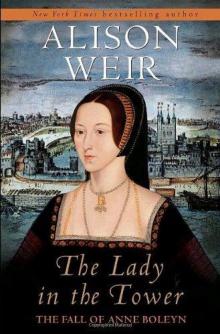 The Lady in the Tower: The Fall of Anne Boleyn
The Lady in the Tower: The Fall of Anne Boleyn Six Wives of Henry VIII
Six Wives of Henry VIII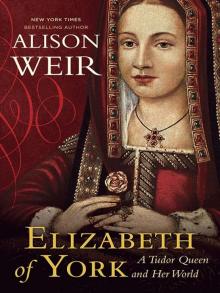 Elizabeth of York: A Tudor Queen and Her World
Elizabeth of York: A Tudor Queen and Her World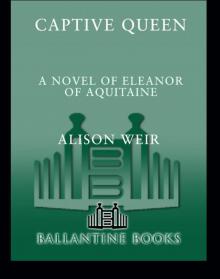 Captive Queen
Captive Queen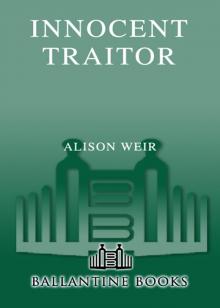 Innocent Traitor
Innocent Traitor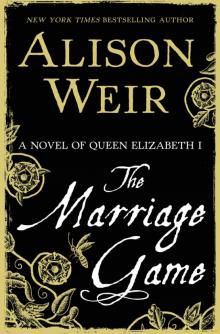 The Marriage Game
The Marriage Game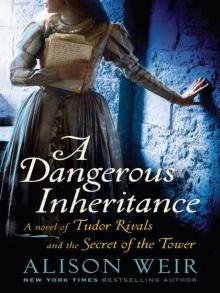 A Dangerous Inheritance
A Dangerous Inheritance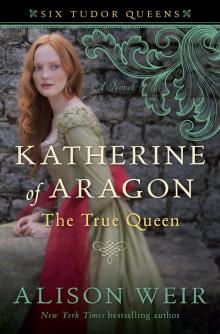 Katherine of Aragón: The True Queen
Katherine of Aragón: The True Queen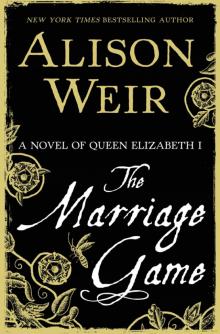 The Marriage Game: A Novel of Queen Elizabeth I
The Marriage Game: A Novel of Queen Elizabeth I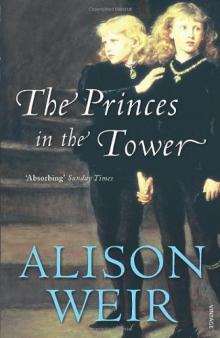 Princes in the Tower
Princes in the Tower Anne Boleyn: A King's Obsession
Anne Boleyn: A King's Obsession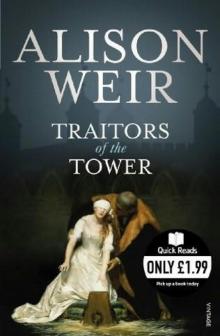 Traitors of the Tower
Traitors of the Tower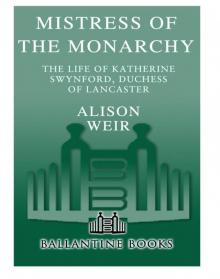 Mistress of the Monarchy: The Life of Katherine Swynford, Duchess of Lancaster
Mistress of the Monarchy: The Life of Katherine Swynford, Duchess of Lancaster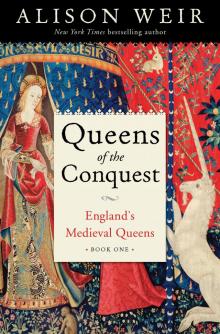 Queens of the Conquest: England’s Medieval Queens
Queens of the Conquest: England’s Medieval Queens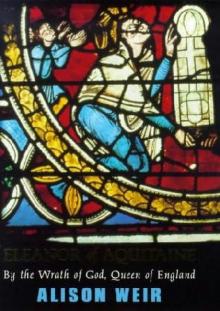 Eleanor of Aquitaine: A Life
Eleanor of Aquitaine: A Life Mary, Queen of Scots, and the Murder of Lord Darnley
Mary, Queen of Scots, and the Murder of Lord Darnley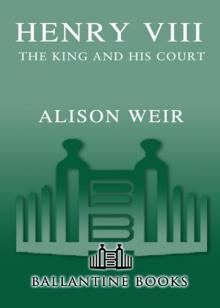 Henry VIII: The King and His Court
Henry VIII: The King and His Court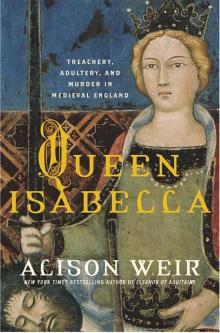 Queen Isabella: Treachery, Adultery, and Murder in Medieval England
Queen Isabella: Treachery, Adultery, and Murder in Medieval England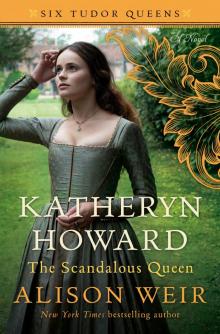 Katheryn Howard, the Scandalous Queen
Katheryn Howard, the Scandalous Queen Arthur- Prince of the Roses
Arthur- Prince of the Roses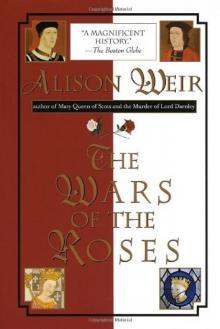 The Wars of the Roses
The Wars of the Roses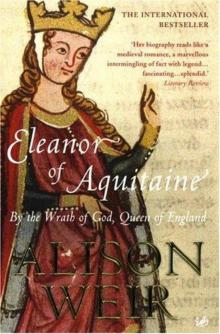 Eleanor of Aquitaine: By the Wrath of God, Queen of England
Eleanor of Aquitaine: By the Wrath of God, Queen of England Mary Boleyn: The Great and Infamous Whore
Mary Boleyn: The Great and Infamous Whore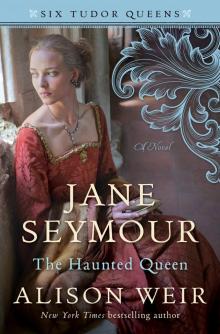 Jane Seymour: The Haunted Queen
Jane Seymour: The Haunted Queen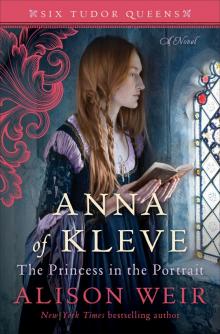 Anna of Kleve, the Princess in the Portrait
Anna of Kleve, the Princess in the Portrait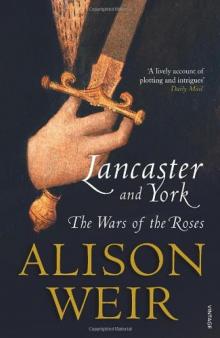 Lancaster and York: The Wars of the Roses
Lancaster and York: The Wars of the Roses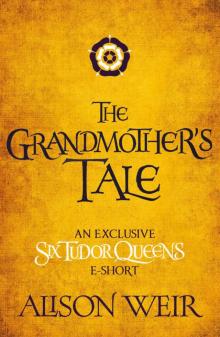 The Grandmother's Tale
The Grandmother's Tale The Princess of Scotland (Six Tudor Queens #5.5)
The Princess of Scotland (Six Tudor Queens #5.5)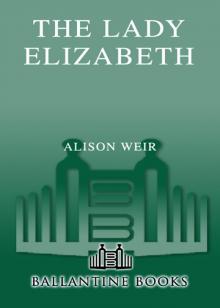 The Lady Elizabeth
The Lady Elizabeth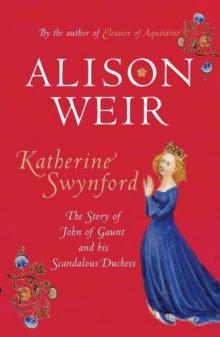 Katherine Swynford: The Story of John of Gaunt and His Scandalous Duchess
Katherine Swynford: The Story of John of Gaunt and His Scandalous Duchess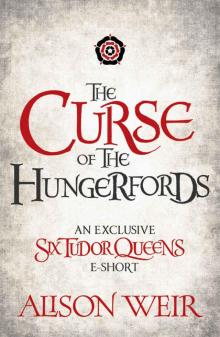 The Curse of the Hungerfords
The Curse of the Hungerfords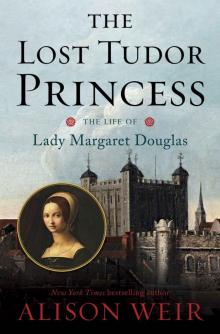 The Lost Tudor Princess: The Life of Lady Margaret Douglas
The Lost Tudor Princess: The Life of Lady Margaret Douglas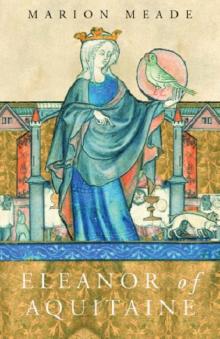 Eleanor of Aquitaine
Eleanor of Aquitaine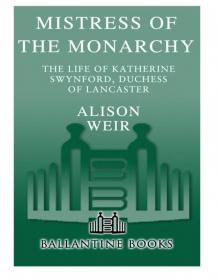 Mistress of the Monarchy
Mistress of the Monarchy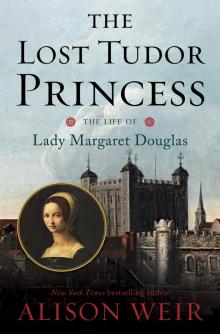 The Lost Tudor Princess
The Lost Tudor Princess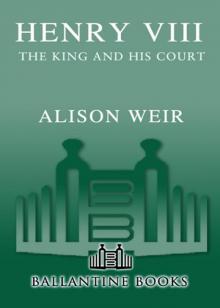 Henry VIII
Henry VIII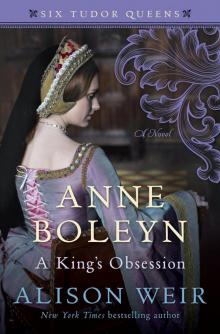 Anne Boleyn, a King's Obsession
Anne Boleyn, a King's Obsession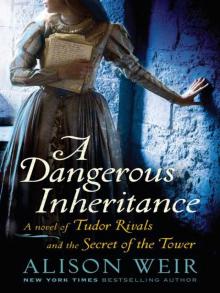 A Dangerous Inheritance: A Novel of Tudor Rivals and the Secret of the Tower
A Dangerous Inheritance: A Novel of Tudor Rivals and the Secret of the Tower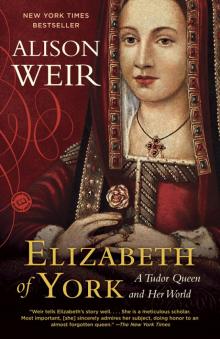 Elizabeth of York
Elizabeth of York Katherine of Aragon, the True Queen
Katherine of Aragon, the True Queen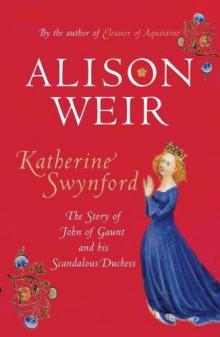 Katherine Swynford
Katherine Swynford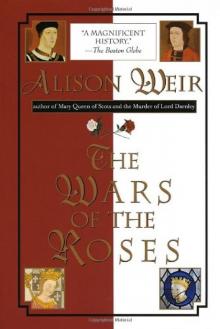 Wars of the Roses
Wars of the Roses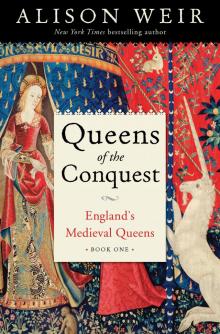 Queens of the Conquest
Queens of the Conquest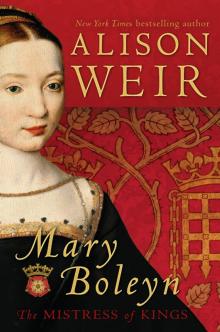 Mary Boleyn
Mary Boleyn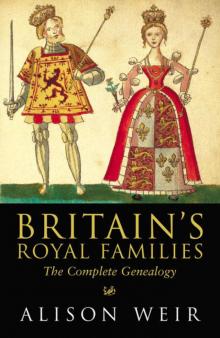 Britain's Royal Families
Britain's Royal Families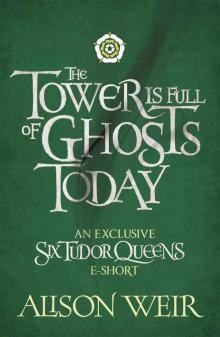 The Tower Is Full of Ghosts Today
The Tower Is Full of Ghosts Today Life of Elizabeth I
Life of Elizabeth I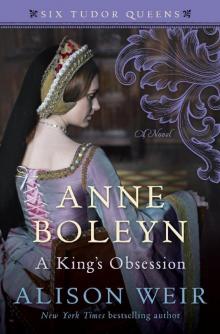 Anne Boleyn A King's Obssession
Anne Boleyn A King's Obssession Lancaster and York
Lancaster and York Jane Seymour, the Haunted Queen
Jane Seymour, the Haunted Queen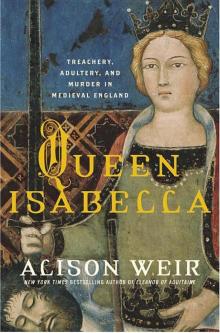 Queen Isabella
Queen Isabella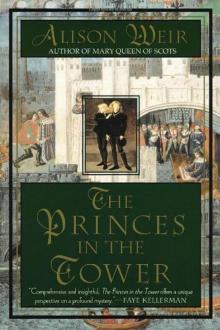 The princes in the tower
The princes in the tower